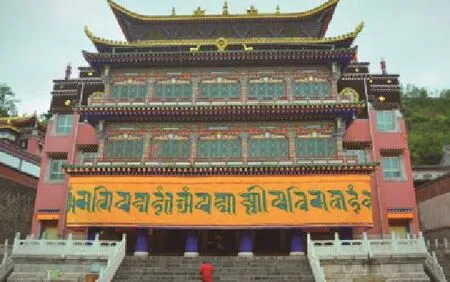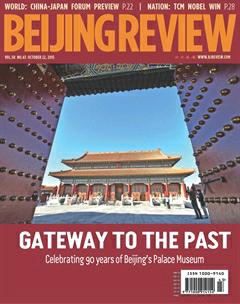Monastic Musings
By Francisco Little
Monastic Musings
By Francisco Little

The Great Hall of the Golden Roof at Ta’er Monastery in Huangzhong County, northwest China’s Ningxia Hui Autonomous Region
My eyes kept being drawn to the cartoon cutout characters on the bobbing bus ceiling. Mickey Mouse and Pluto were pasted in between metallic paper roses, hearts and butterflies. It all seemed incongruous hovering over an eclectic collection of rural passengers, jabbering in a jarring dialect, crammed into a bus chugging its way into the mountains high above Xining.
We were heading for Ta’er Monastery (Kumbum in Tibetan) in Huangzhong County, populated by a mix of Muslims, Han Chinese and Tibetans, all living at 2,500 meters above sea level on the Qinghai-Tibet Plateau.
The air had thinned since arriving by express train from Lanzhou and heavy rain pounded the windows as the bus driver crunched his way through the gears.
An hour after leaving the very impressive Xining Railway Station, allegedly the largest in west China, the bus ground to a halt. A sign declared “Ta’er 1 km” and a bloom of umbrellas cracked open as the faithful made their way past endless souvenir shops toward the floating clouds of incense smoke.
Ta’er is almost 450 years old and is said to be the most important repository of Tibetan Buddhist artifacts outside Tibet Autonomous Region. Built to honor Tsongkhapa, founder of the Yellow Hat (Gelugpa) Sect of Tibetan Buddhism, its many temples, hallways and living quarters for more than 300 monks are spread out over 15 hectares.
For prostrating pilgrims and those curious about climbing into the heart of how a monastery functions, making the arduous trek is enlightening.
I found the entry fee of 80 yuan into the campus rather steep. The gatekeeper said it was no problem to take photos freely. I think he was being liberal with the truth.
I had chosen to visit during the week as I had heard that visitor numbers can swell during weekends. Despite that there was a steady stream of people filing through the ornate green metal entry gate, Tibetans dressed in traditional wear festooned with prayer beads and fashionable Chinese city ladies in mini-skirts provided a clash of two worlds.
Ta’er is in effect a mini city of 52 halls. The brushstrokes of color from prayer flags, embroideries, the majestic four-storied Great Hall of the Golden Roof and other examples of Tibetan architecture invigorate an otherwise gray campus. At the entrance to each temple hangs a sign reading “No Photography,” which is understandable in places of worship.
However, an incident during my tour left me wondering just what exactly the rules are.
Whilst I was photographing a majestic temple entrance, a monk suddenly exited and inadvertently became part of my image. He rushed toward me angrily shouting “no photo, no photo” and tried to grab my camera. I politely objected and moved on with his shouts ringing in my ear. An angry monk was not part of my predetermined image of a monastery dedicated to peaceful contemplation and meditation.
If visitors are not permitted to photograph monks outside the temples, or on the paths and roads meandering through the compound, it becomes a conundrum. Why? Because the mere act of photographing buildings, stupas and scenery outside the temples will inevitably at some point be interrupted by and include monks, who live, pray and walk there.
I was also uncomfortable with the fact that visitors can freely enter the sacred space used for monks to meditate and take religious instruction. The dim inner maroon enclaves of the Great Hall of Meditation, where yak-butter lamps, centuries-old murals and deep sonorous chants entrance the senses, should be sealed off to the voyeuristic eyes of gawking tourists, who shuffled about as if they were on an outing in Disneyland.
Ironically, these thoughts brought to mind the Disney cartoon characters decorating the bus ceiling on the ride in.
If these important spiritual places of worship are to be open to the public, perhaps specific designated areas with monk guides could be used to educate lay visitors about Buddhism and allow for photographs. Other areas could be off limits.
As the rain softened and I placed my burning incense in a giant trough on the way out, an old stooped Tibetan woman with long grey plaits smiled at me, pressing her palms together in a blessing. I resisted the urge to take a photo and smiled back, returning the blessing. Ending the visit on such a peaceful, sanguine note restored my faith, leaving my most enduring image mental rather than digital. ■
The author is a South African traveler to China Copyedited by Eric Daly
Comments to yanwei@bjreview.com
- Beijing Review的其它文章
- NUMBERS
- WORLD
- ECONOMY
- SOCIETY
- THIS WEEKWORLD
- HOTEL INFORMATION

